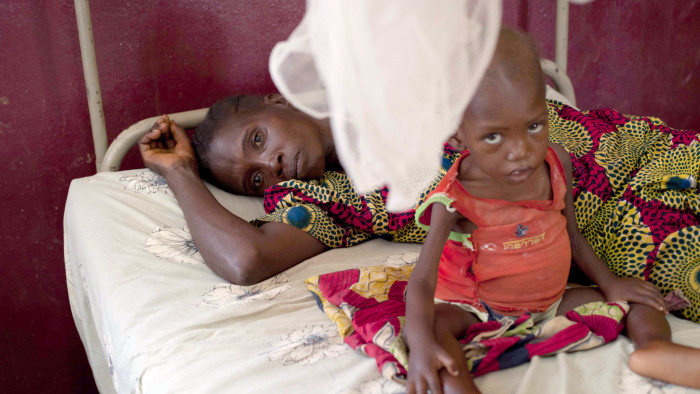Population growth in sub-Saharan Africa raises food supply alarm

Roula Khalaf, Editor of the FT, selects her favourite stories in this weekly newsletter.
When Harry Harrison published Make Room!, Make Room! in 1966 – a dystopian vision of an overpopulated world of 7bn people that rationed food rigorously – the global population was just over 3bn.
It captured the spirit of the times, which continued into the 1970s and 1980s, featuring successive and repeated warnings of a world growing so rapidly it would quickly exhaust its ability to feed itself.
Now that the global population has surpassed 7bn, and is on track to exceed 9.6bn by 2050, the facts are far from Harrison’s vision. According to the latest UN report on the Millennium Development Goals, the world is less poor, less hungry, less indebted and much healthier than it was when the goals were set in the early 1990s.
Nevertheless, food experts note, the rapid increase of the population in certain parts of the world raises questions about how much this progress can actually help secure better and healthier lives. Central to these concerns is sub-Saharan Africa.
According to the UN, the population of the region is set to more than double from the current 900m to 2.1bn by 2050, and to quadruple to 3.9bn by the end of this century. Although the region is by no means the only population centre for which food security is likely to remain a challenge, it is certainly the largest.
Jason Bremner, director of the population, health and environment programme at the Population Reference Bureau, a US think-tank, says the single most pressing issue for many of the countries in the region is controlling explosive population growth.
Fertility estimates for the region were revised upward by the UN in the latest 2012 projections. The data shows that unlike much of the industrialised world and indeed, much of Asia and South America, fertility rates in sub-Saharan Africa are rising. This increase is continuing despite the emergence of population trends associated with lowering fertility rates, such as declining child mortality, rising female literacy and growing urbanisation.
According to the UN, the fertility rate was almost halved from five children per mother over her lifetime to 2.5 globally. Among the world’s least developed countries, however, there has been a slight decrease – roughly a third – and the average is 4.2 per mother.
In west Africa, a region where malnutrition remains a challenge, fertility rates have declined modestly in the past 60 years, from 6.3 to 5.7 children per mother and in central Africa, a region including some of the poorest African nations such as the Democratic Republic of Congo, fertility rates have increased from 5.99 to 6.17 since 1950.
According to a report from the World Resources Institute, lowering fertility rates to a replacement rate of 2.1 children per woman would reduce food demand for the region by 600tn kilocalories a year by 2050. While 27 per cent of its people are undernourished, sub-Saharan Africa is also home to 44 per cent of the world’s hungry people, as noted by a US Department of Agriculture study.
“The problem is that less than 10 per cent of women in these countries are using modern contraception,” Mr Bremner says. Evidence from elsewhere – Bangladesh in particular – suggests that a strong political commitment to a community-based approach to contraception can sharply slow population growth. To keep the population steady, the focus is now on achieving “replacement fertility rate” for rural women.
Still, in addition to rapid population growth there are structural factors that are making sub-Saharan Africa vulnerable to food shortages.
“You have to have growth in agricultural productivity that is at least as fast as your population growth,” says Dominique van der Mensbrugghe, senior economist at the Food and Agriculture Organisation, part of the UN. He pointed out that there are parts of the world that have high population growth, but also high productivity. Sub-Saharan Africa has the reverse of both.
For one thing, the region is very diverse and the soil quality over large areas remains poor. The “green revolution” that allowed India to develop speciality crops to feed its rapidly growing population was mainly a government initiative and the desperately poor nations in Africa do not have the resources.
“It’s not profitable to develop the seeds for Africa,” says Mr Van der Mensbrugghe. He argues that without a strong financial incentive, companies engaged in genetic engineering have little incentive to invest in research and development.
Moreover, he adds, seeds require fertilisers and investment in water supply systems for irrigation. However, most of Africa is dependent upon rain water for crop growing. Farms are typically very small, as landholders divide holdings between their many children, which also causes low agricultural productivity.
“There are significant institutional weaknesses,” he says.
Comments